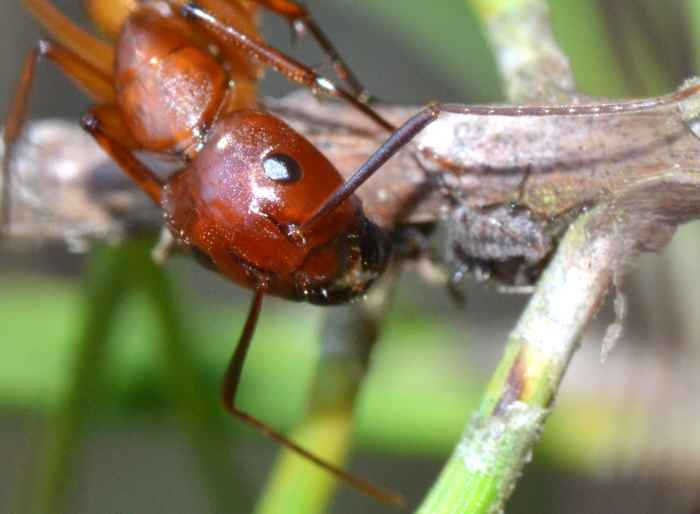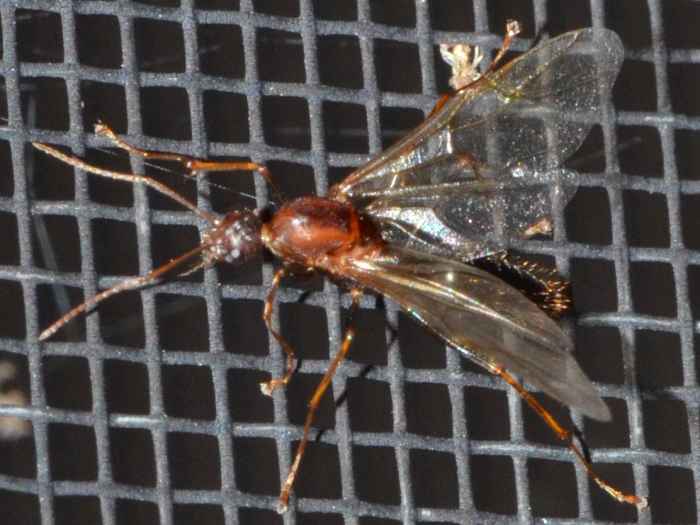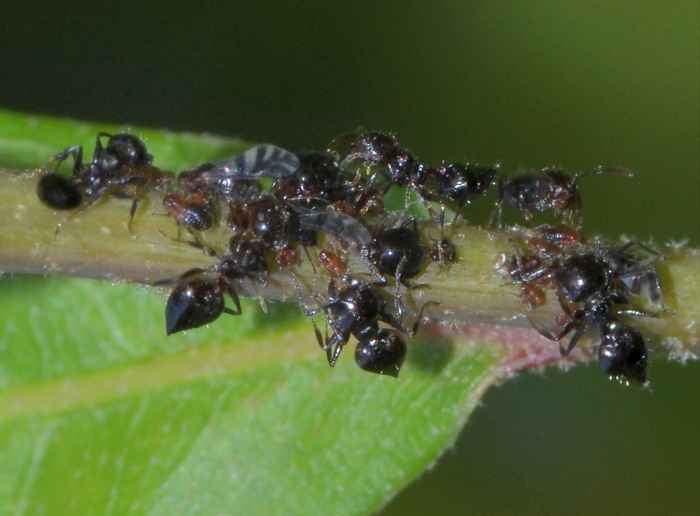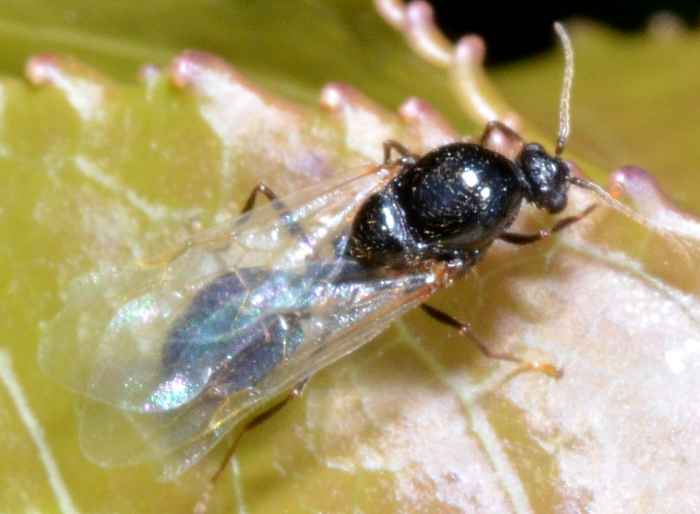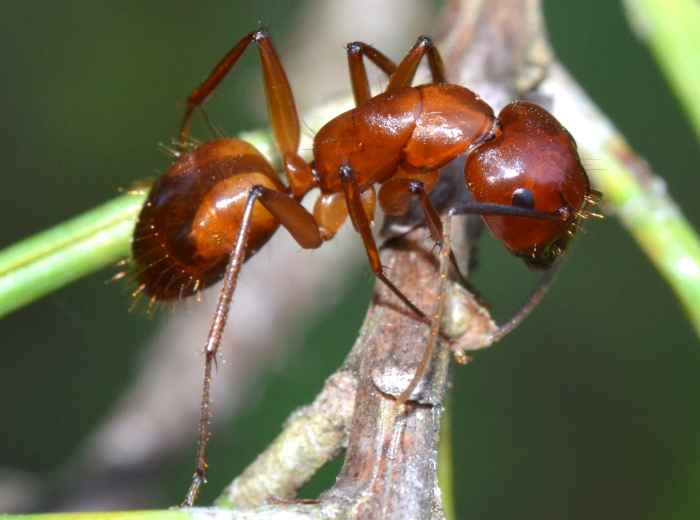 Camponotus sp. (Carpenter Ant). | No, they do not eat wood :) These are Carpenter Ants (Camponotus sp.) on a pine tree twig. There are over 50 species in the US. Some nest in damp wood (others in soil) and hollow out small parts of trees. The black carpenter ant (C. pennsylvanicus) is the most likely one to infest houses (these here aren't black). All ants in this genus have an obligate bacterial endosymbiont (Blochmannia).
bug guide (this photo): http://bugguide.net/node/view/564688 wikipedia: http://en.wikipedia.org/wiki/Carpenter_ant | |
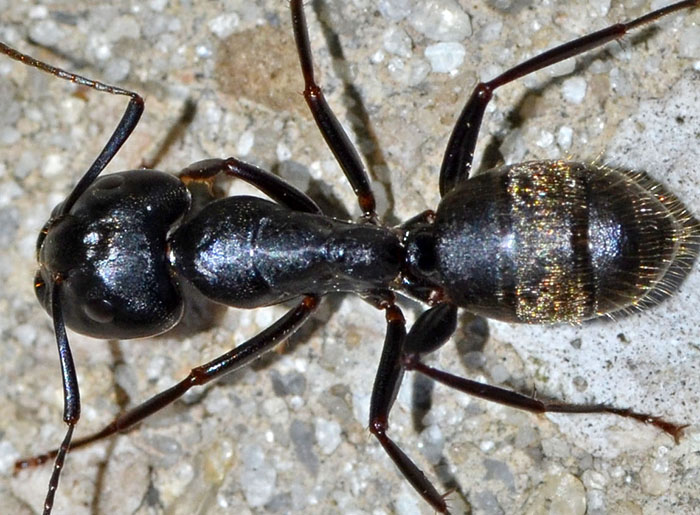 Camponotus pennsylvanicus | Mighty big ant, all black and covered with long, yellowish hairs. The presence of this species in Florida is limited to some counties in the north. It nests in trees and rotten logs or tree stumps. It also attacks fences, poles and buildings. This is probably the most destructive carpenter ant in North America. bug guide (this photo): http://bugguide.net/node/view/1365918 | |
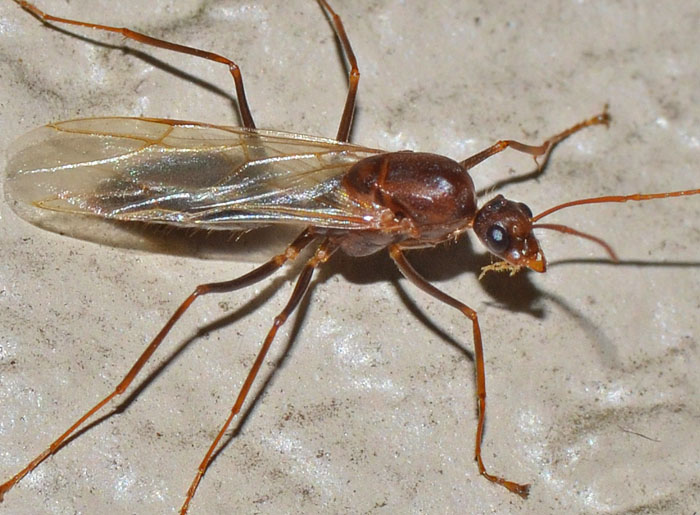 Camponotus floridanus (Florida Carpenter Ant) ♂. | This winged insect is a Florida Carpenter Ant (Camponotus floridanus). In the US it is only found in the Southeast coastal plain. The ant alate in the small photo was seemingly attracted by the light in our living room (09/19/11, 9 pm).
bug guide (this photo): http://bugguide.net/node/view/946508 UF: http://edis.ifas.ufl.edu/in455 | |
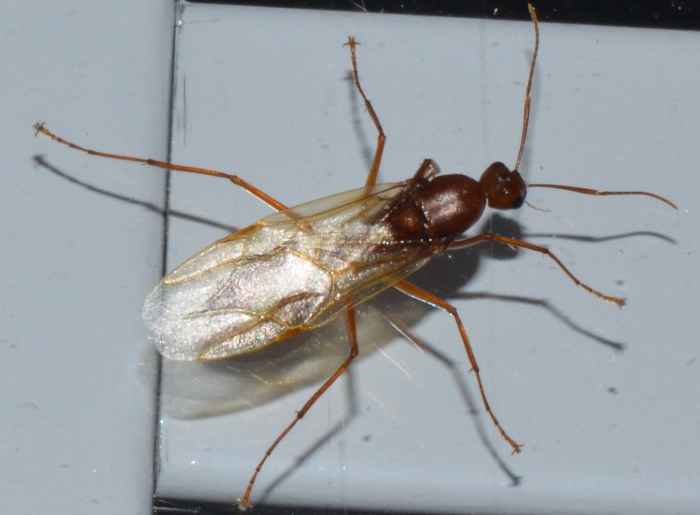 Camponotus castaneus (Reddish Carpenter Ant). | This Carpenter ant is Camponotus castaneus. It belongs to the subgenus Tanaemyrmex. Citing from Krombein et al. (Catalog of Hymenoptera in America North of Mexico): "Most species of this subgenus nest in the soil under stones or other objects; occasionally nests may be surmounted by a small crater. The ants rarely nest in wood, but, if so, the wood is usually buried in the soil." bug guide (this photo): http://bugguide.net/node/view/635312 | |
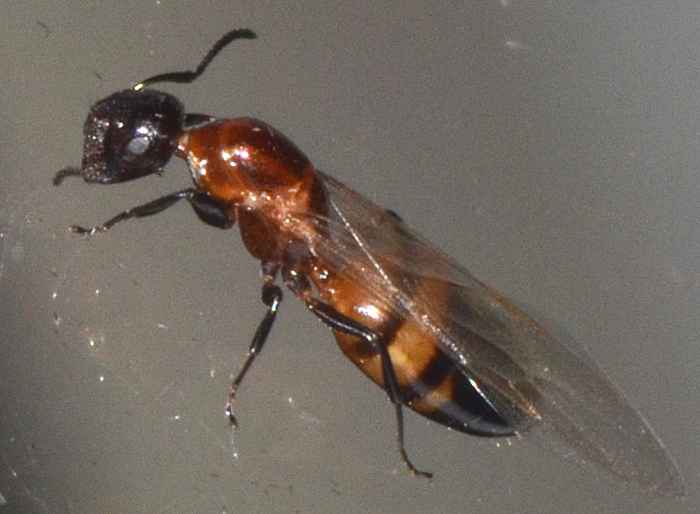 Camponotus impressus (Carpenter Ant). | This small Carpenter Ant is Camponotus impressus. It impresses with a rather sculptured body and a large head that the ant uses to block the nest entrance, allowing entry only to ants from the same nest. They live in galls, twigs, and hollow stems of woody plants. Typical tree species include ash and elderbery oak.
bug guide (this photo): http://bugguide.net/node/view/646472 | |
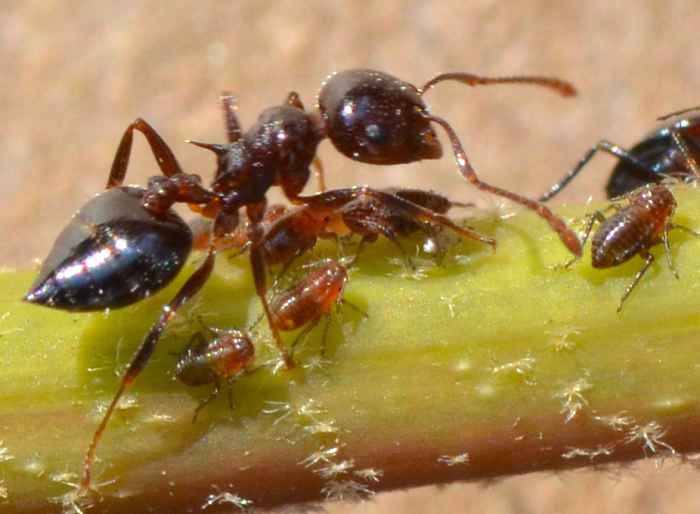 Crematogaster sp. (Acrobat Ant). | An Acrobat Ant (Crematogaster sp.) taking care of aphids. When viewed from the top, these ants have an unusual, heart-shaped gaster (the bulbous posterior portion or rear end). The genus has 28 species in North America. Based on the spines on the ant's back, my guess for this specimen is C. atkinsoni which are known to exist in Florida.
bug guide (this photo): http://bugguide.net/node/view/632809 Iowa State University: http://www.ipm.iastate.edu/ipm/iiin/aacrobat.html | |
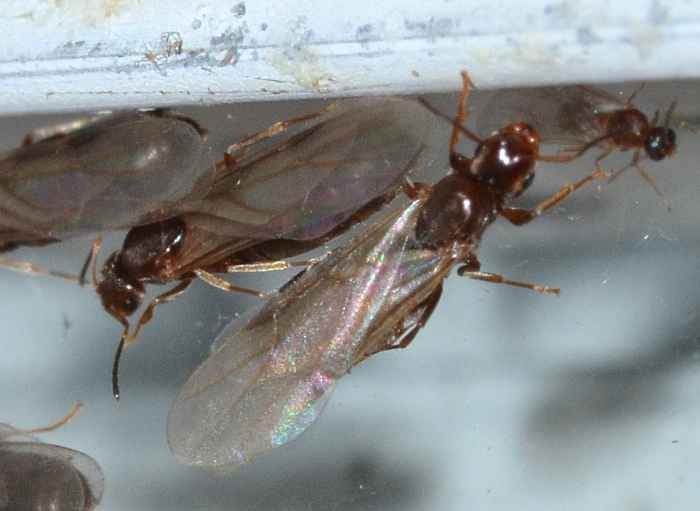 Nylanderia sp. (Crazy Ant). | The name crazy ants reflects their erratic and fast movements and their tendency not to follow trails as as other ants. These small ants live in soil, leaf litter, and rotting wood. They typically perform their mating flights in late April through May. This bunch was clearly attracted by the light in our living room. bug guide (this photo): http://bugguide.net/node/view/635307 UF: http://entnemdept.ufl.edu/creatures/urban/ants/caribbean_crazy_ant.htm | |
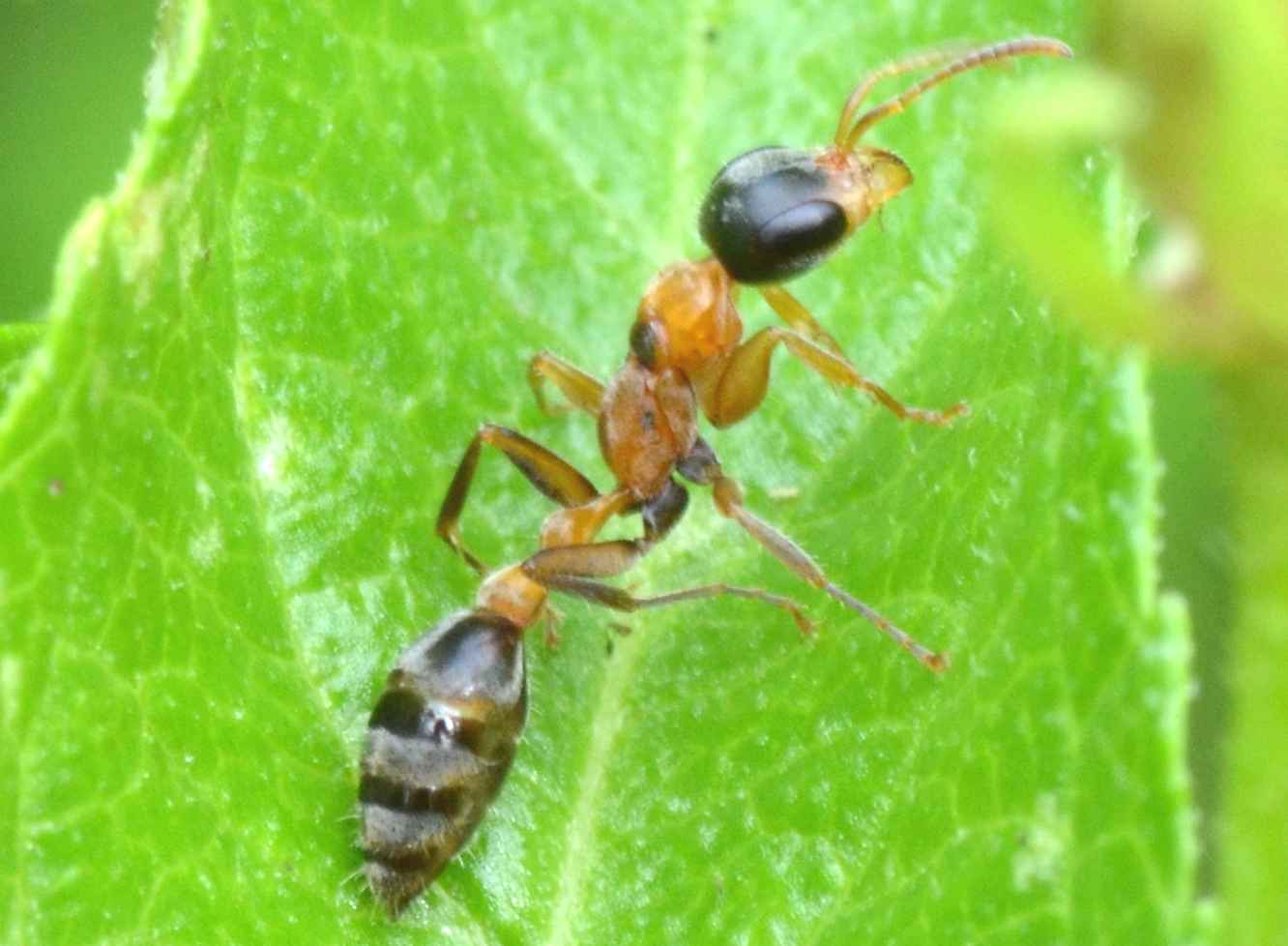 Pseudomyrmex sp. (gracilis ?) (Elongate Twig Ant). | Since the 1960s the Elongate (or Mexican) Twig Ant (Pseudomyrmex gracilis) has become widespread in Florida. It has a painful sting. Nests are small (few ants), have a single queen, and one small entrance. Unlike other species in this genus, P. gracilis is not an acacia-specialist, but nests in a wide range of vegetation. This specimen was darting swiftly over my lantana leaves, which made it difficult to take this photo. There are other Pseudomyrmex species in Florida. bug guide (this photo): http://bugguide.net/node/view/563767 J. K. Wetterer, Fl. Entomol. 93, 535, 2010: http://www.fcla.edu/FlaEnt/fe93p535.pdf UF: http://edis.ifas.ufl.edu/pdffiles/IN/IN75200.pdf | |
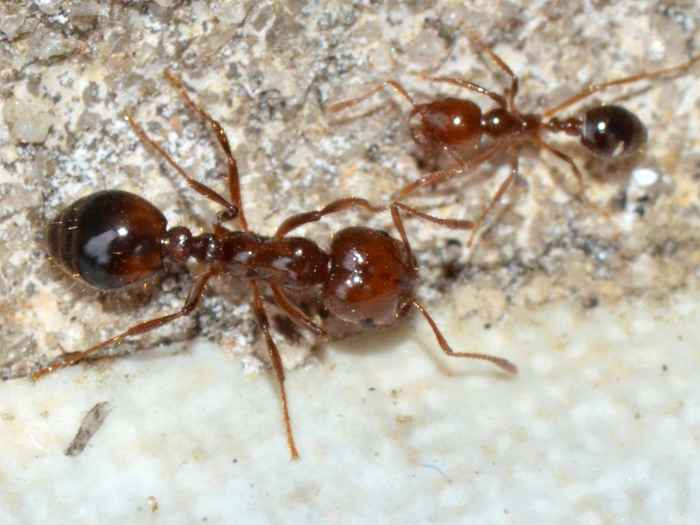 Solenopsis invicta (Red Imported Fire Ant). | The infamous Red Fire Ant (Solenopsis invicta). It was introduced into the US from South America around 1940. The workers protect their nest by stinging the feet and legs of the intruder. The stings cause small but very painful wounds that develop into itchy pustules. The postules can become infected. Interestingly Martineziana dutertrei is a small scarab beetle that lives in fire ant mounds. The photo below shows a winged specimen and was taken on 06/16/12 (7 pm).
bug guide (this photo): http://bugguide.net/node/view/588395 |

